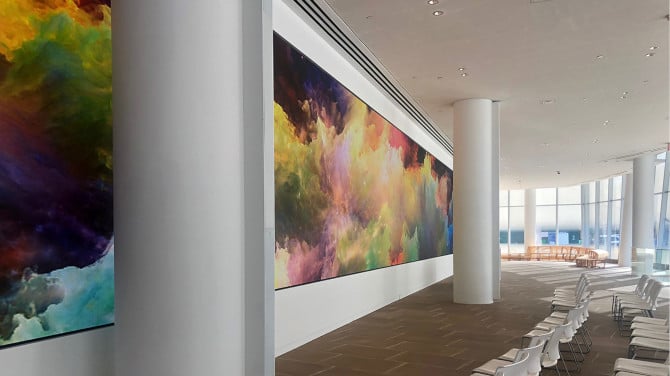Novel Strategies to Enhancing Mobile Connectivity Systems for Luminescent Display Screens.
Wiki Article
Wireless connectivity technologies for LED wall screens have transformed the way we experience visual interfaces in diverse settings, such as concerts, corporate gatherings, and promotional displays. These units, known for their vibrant colors and high resolution, rely heavily on strong wireless networks to perform effectively. As technology continues to evolve, cutting-edge strategies are being engineered to optimize these wireless solutions. This article will explore some of the latest strategies aimed at boosting wireless connectivity for LED wall panels.

One notable method to enhancing wireless communication is the use of advanced antenna systems. Antennas play a vital role in sending and receiving signals between components. By utilizing smart antennas, which can adjust their orientation and focus based on the surroundings, manufacturers can greatly improve signal integrity and stability. This adaptability helps minimize disruption from other electronic systems and obstacles, leading to sharper video output and more stable link performance for Light Emitting Diode wall panels.
Another forward-thinking approach involves utilizing mesh networking systems. Unlike conventional wireless setups that rely on a single access point, mesh systems consist of multiple nodes that work together to spread the internet signal over a larger area. This setup guarantees that Light Emitting Diode wall panels receive a consistent signal no matter their placement. In spaces like stadiums or large event centers, where physical obstructions may interfere with signals, mesh networks provide a more robust solution by ensuring connectivity even in high-traffic areas.
In addition, integrating edge computing into wireless connectivity can enhance performance for LED wall panels. Edge computing allows data handling to occur near the source of data origination rather than depending entirely on centralized cloud infrastructure. By processing data near check that the LED wall units, the architecture reduces latency, resulting in faster response times and smoother video playback. This development is especially beneficial for applications that require real-time updates or interactive features, making presentations more engaging for audiences.
Lastly, leveraging new communication protocols can also enhance wireless connectivity for Light Emitting Diode wall screens. Protocols such as Wi-Fi 6 and 5G offer enhanced bandwidth and faster data transfer rates compared to previous standards. These advancements enable multiple devices to connect simultaneously without sacrificing performance. As LED wall panels are often used in conjunction with other smart devices, implementing these advanced protocols view it now ensures that all components can communicate seamlessly, leading to an significantly improved user experience.
In conclusion, the advancement of wireless communication technologies for Light Emitting Diode wall panels is essential as technology continues to evolve. Through developments such as intelligent antennas, mesh networking systems, edge computing integration, and new communication protocols, manufacturers can provide better performance and stability. These strategies not only improve the functionality of LED wall panels but also enhance the visual displays they deliver across multiple applications. As these technologies continue to progress, audiences can anticipate even more impressive visual presentations in the coming years.